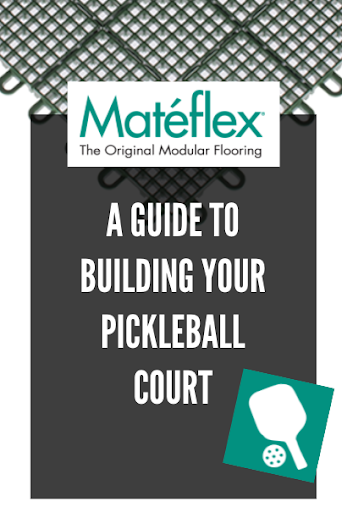Specialist Pickleball Court Construction-- From Style to Installment
Specialist Pickleball Court Construction-- From Style to Installment
Blog Article
Sustainable Practices in Pickleball Court Construction You Should Know
As the appeal of pickleball proceeds to rise, so too does the requirement for lasting practices in court building. The influence of these practices expands much beyond the court itself.
Picking Eco-Friendly Products
Choosing eco-friendly materials is an important step in the construction of lasting pickleball courts. The option of sustainable products not just lessens environmental influence but additionally improves the long life and efficiency of the court. Secret products include reused rubber for the surface, which provides exceptional durability and shock absorption while drawing away waste from landfills.
Furthermore, using locally sourced products lowers transport discharges and supports regional economic situations. Pickleball court construction. For instance, using native hardwoods for secure fencing and seats can offer a sustainable visual while making certain resilience against the aspects.
Incorporating absorptive materials for court foundations can even more add to sustainability by enabling all-natural water drainage and minimizing drainage. These selections not only secure local ecosystems but likewise promote healthier play environments.
Reliable Drain Solutions
While the choice of eco-friendly materials is vital, implementing effective water drainage options is similarly important for maintaining sustainable pickleball courts. Proper drain not only shields the court surface area from water damages but likewise reduces erosion and runoff, advertising ecological honesty.
Efficient drainage systems can consist of permeable paving, which allows water to infiltrate the ground rather than merging on the surface. This reduces the possibility of standing water, which can result in mold and mildew and other upkeep concerns. In addition, including tactically placed drainage networks and swales can route excess water away from the court area, guaranteeing a completely dry playing surface area and stopping dirt disintegration.
Using indigenous vegetation in the landscaping around the courts can further improve drain by taking in excess water and decreasing runoff. These plants call for much less watering and advertise biodiversity, straightening with lasting practices.
Additionally, it is essential to frequently keep the water drainage system to ensure its lasting effectiveness. This consists of clearing up debris and surveillance for blockages. By prioritizing efficient drain services, pickleball court constructors can dramatically add to the sustainability and long life of the facility, inevitably profiting both players and the environment.
Energy-Efficient Lighting Options
As the need for pickleball proceeds to grow, incorporating energy-efficient lights alternatives into court layout has actually come to be significantly important for sustainability. Typical lighting systems commonly take in excessive power, contributing to greater functional costs and environmental influence. For that reason, adopting contemporary, energy-efficient modern technologies is vital for both brand-new building and constructions and renovations.
LED (Light Emitting Diode) lighting stands apart as a leading choice as a result of its longevity and energy cost savings (Pickleball court construction). Compared to conventional lighting, LEDs utilize about 75% much less power and can last approximately 25 times longer, substantially decreasing maintenance costs. Moreover, the directional nature of LED lighting lessens light air pollution, making certain that illumination is concentrated on the court instead of surrounding areas.

Lasting Surface Area Alternatives
Discovering sustainable surface area options for pickleball courts has obtained traction among from this source contractors and players alike. The focus on environment-friendly materials not just straightens with the growing my company ecological understanding however likewise boosts the performance and sturdiness of the courts.
One popular alternative is using recycled rubber, which can be sourced from utilized tires. This product gives excellent shock absorption, lowering the danger of injuries for gamers while advertising sustainability. In addition, modular tiles made from recycled plastics provide one more viable option. These floor tiles are easy to set up and change, and their adaptability enables for different court arrangements.
All-natural grass courts are also becoming a sustainable choice, advertising biodiversity and minimizing the warm island result. Nevertheless, they need regular maintenance and water, which may not align with all sustainability objectives.

Water Preservation Methods

One more efficient method entails the installation of rainwater harvesting systems. These systems store and collect rain for use in keeping court surfaces and landscaping. This strategy not just saves potable water however likewise minimizes dependence on community resources.
In addition, utilizing drought-resistant landscaping around the courts is necessary. Indigenous plants call for much less water and are much better adjusted to regional environment conditions, therefore reducing overall water usage. In addition, utilizing effective irrigation systems, such as drip watering, ensures that water is provided straight to plant origins, reducing dissipation and waste.
Verdict
Incorporating sustainable practices in pickleball court building substantially adds to ecological preservation and resource effectiveness. Using green products, carrying out efficient drain options, and embracing energy-efficient illumination options can greatly reduce ecological influence. Moreover, checking out lasting surface area choices and utilizing water preservation methods enhance the overall sustainability of these entertainment centers - Pickleball court construction. By focusing on these practices, the building and construction of pickleball courts can line up with more comprehensive environmental goals while advertising longevity and capability within communities.
As the popularity of pickleball continues to increase, so as well does the demand for lasting techniques in court construction.Selecting green products is an important step in the building click site of sustainable pickleball courts. By prioritizing energy-efficient illumination alternatives, pickleball court contractors can contribute to a more sustainable future while fulfilling the demands of gamers and stakeholders alike.Integrating sustainable surface alternatives not just boosts the performance of pickleball courts but also leads the method for carrying out efficient water conservation strategies.Integrating sustainable practices in pickleball court building and construction dramatically contributes to ecological conservation and resource performance.
Report this page